|
Following the first sail, April was messed up by Easter, a Bank Holiday, and some very cool weather. However I got one or two tasks done on Seatern!
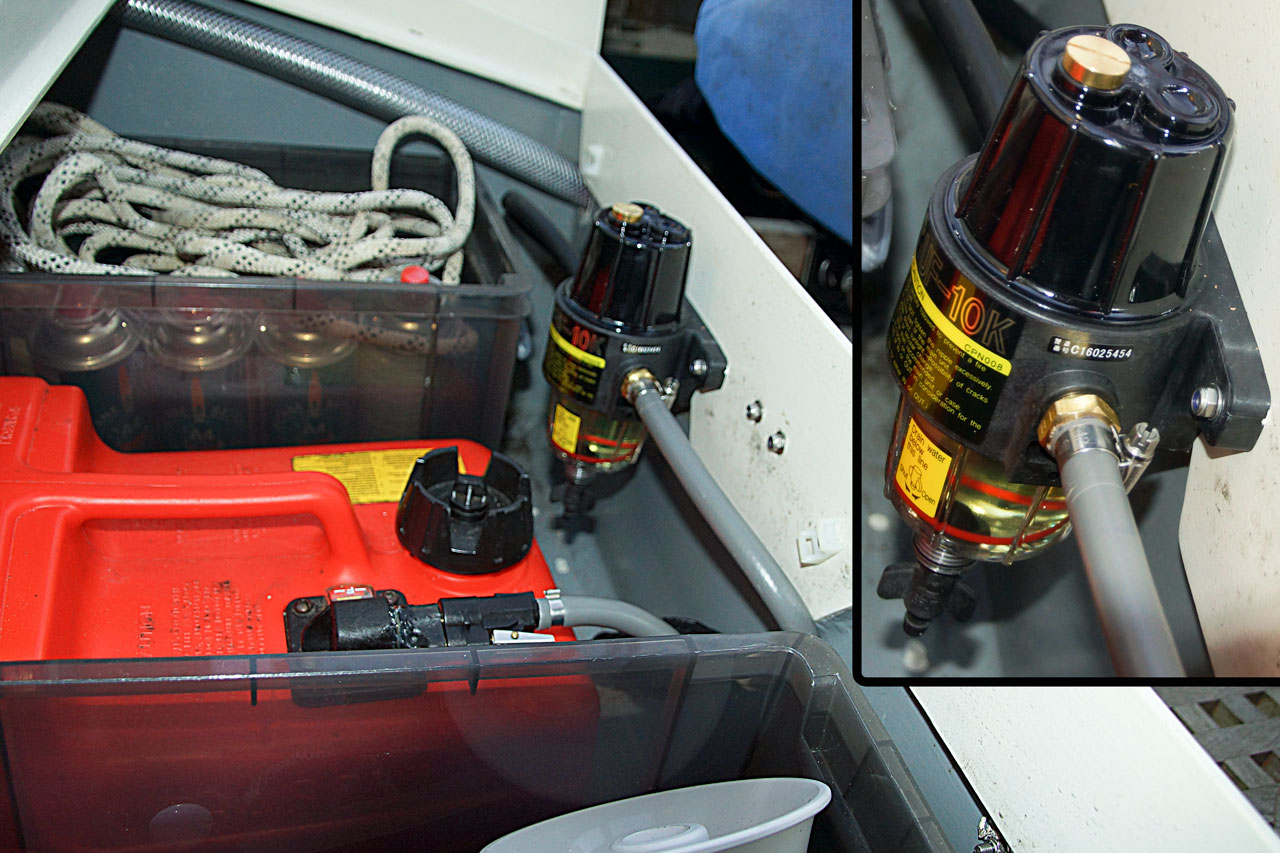 I've installed a Unikas UF-10K Fuel-water separator filter which is claimed to trap "over 99% of any water that may be present in the tank". It's advertised in the States as an accessory for Tohatsu (and other) outboards (the filter is distributed by Tohatsu America Corp.) but I couldn't find a UK source so bought it via ebay from 411-Marine who were advertising the filter assembly plus a replacement filter for $85. With shipping costs it was about £100.The filter offered by my Tohatsu dealer in the UK was about half that price but significantly more bulky and harder to accommodate than the Unikas version.
I've installed a Unikas UF-10K Fuel-water separator filter which is claimed to trap "over 99% of any water that may be present in the tank". It's advertised in the States as an accessory for Tohatsu (and other) outboards (the filter is distributed by Tohatsu America Corp.) but I couldn't find a UK source so bought it via ebay from 411-Marine who were advertising the filter assembly plus a replacement filter for $85. With shipping costs it was about £100.The filter offered by my Tohatsu dealer in the UK was about half that price but significantly more bulky and harder to accommodate than the Unikas version.
To fit the filter implied having a fuel supply hose to the outboard which is fixed inside Seatern rather than simply attached to the external fuel tank. I could not get Tohatsu connectors - those for Mercury looked the same but were different in dimensions. Also I found that ready made hoses were much cheaper than buying the bits. In the end I bought a Mercury male connector for the tank and a Mercury hose to connect between the tank and the filter (with priming bulb). From the filter to the outboard I used part of the old Tohatsu fuel line.
Whether this was all worthwhile or a waste of money remains to be seen! If the fuel additive works as claimed, will mean the filter collects no water... only time will tell! I'll report back at the end of the summer.
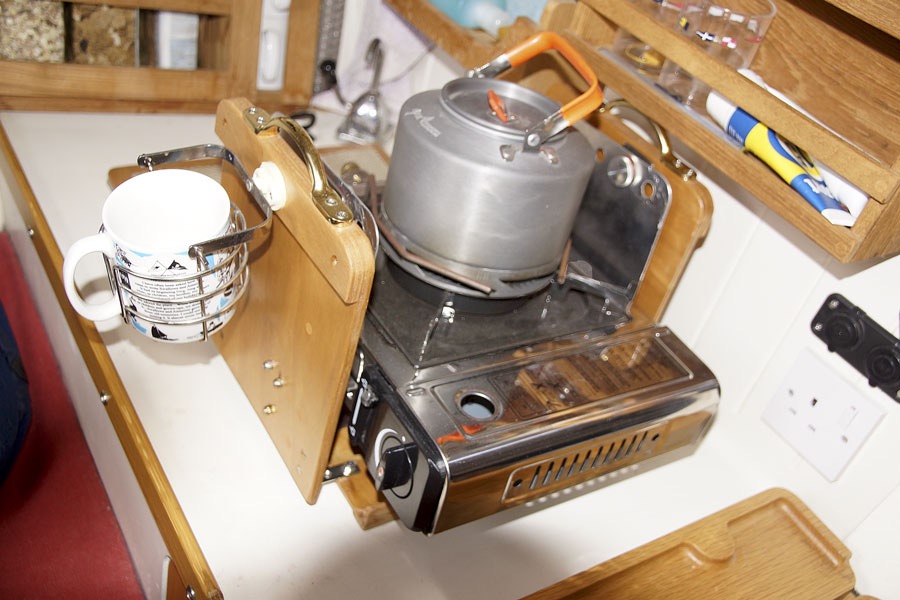 I've been converting my cooking arrangements to use the same sort of butane stove I use for heating Seatern. Given I rarely use the stove it makes sense to only carry the same type of fuel for both purposes. But I do sometimes boil water when sailing so I wanted to have the stove gimballed. The problem is that the design of the horizontal stove means that the balance point varies with the weight of what is being heated and also the weight of the butane cartridge.
I've been converting my cooking arrangements to use the same sort of butane stove I use for heating Seatern. Given I rarely use the stove it makes sense to only carry the same type of fuel for both purposes. But I do sometimes boil water when sailing so I wanted to have the stove gimballed. The problem is that the design of the horizontal stove means that the balance point varies with the weight of what is being heated and also the weight of the butane cartridge.
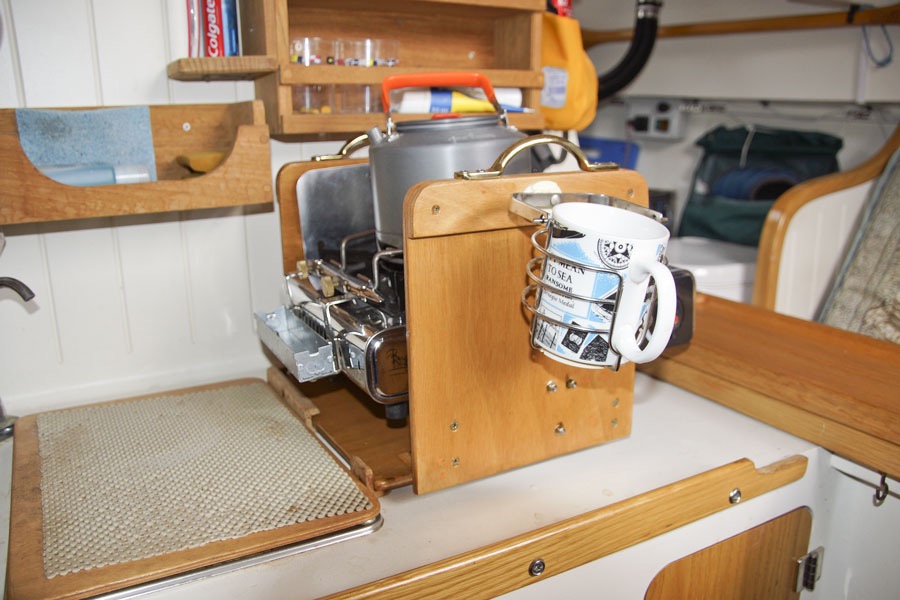 In the end I've balanced the stove for a varying amount of food or water and an empty gas cylinder. Then I've added a metal "trough" opposite to the gas cylinder into which I can put small weights (formed from curtain weights) to balanc however much gas is in the cylinder (i.e. from 0 to 200g).
In the end I've balanced the stove for a varying amount of food or water and an empty gas cylinder. Then I've added a metal "trough" opposite to the gas cylinder into which I can put small weights (formed from curtain weights) to balanc however much gas is in the cylinder (i.e. from 0 to 200g).
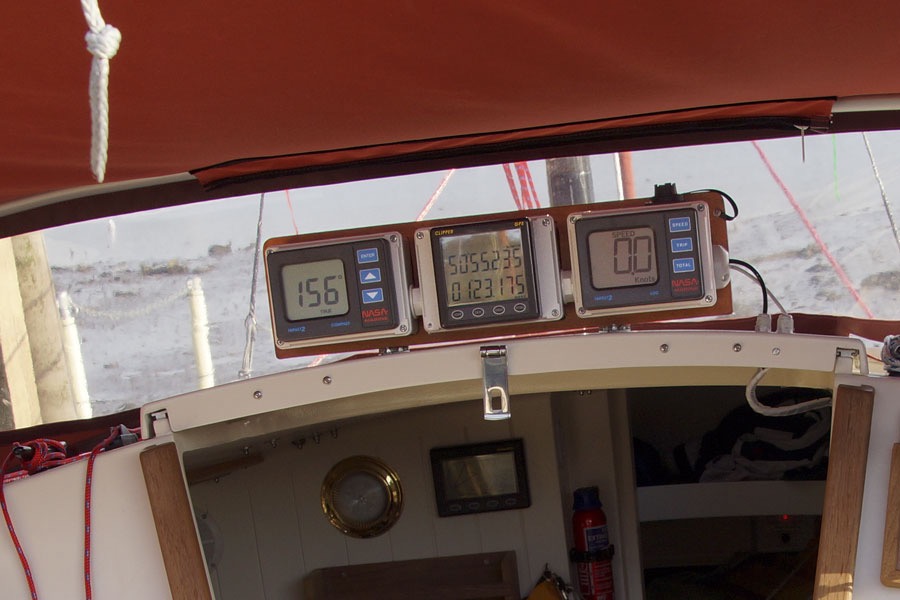 My original layout for the hatch-top instruments included a NASA Target Compass, NASA Clipper GPS display, and NASA Target log. The idea was to display speed through the water, speed over ground, heading, and course made good. However the log did not work reliably because the through hull hole for the sensor (in the well next to the outboard well) was in the wrong place. The hole is now used for the hose to the ballast tank pump, and the log display was replaced with a NASA close hauled display. However, the latter I found most confusing since it looks like the other wind readouts and I kept interpreting it that way!
My original layout for the hatch-top instruments included a NASA Target Compass, NASA Clipper GPS display, and NASA Target log. The idea was to display speed through the water, speed over ground, heading, and course made good. However the log did not work reliably because the through hull hole for the sensor (in the well next to the outboard well) was in the wrong place. The hole is now used for the hose to the ballast tank pump, and the log display was replaced with a NASA close hauled display. However, the latter I found most confusing since it looks like the other wind readouts and I kept interpreting it that way!
I have now modified the instrument holder to simply take the compass and the GPS displays. This removes a problem with the original instrument cluster that I had not anticipated when building it. When the mast was lowered it sat on top of the instrument display rather than dropping onto the aft boom gallows. Now, at last, the boom gallows is able to do what it was designed to do originally! The photos below show the hatch-top instrumentsit after modification and in use on the 2nd May. Not only will the mast be more secure when lowered but the air draft will also be less for going under bridges.
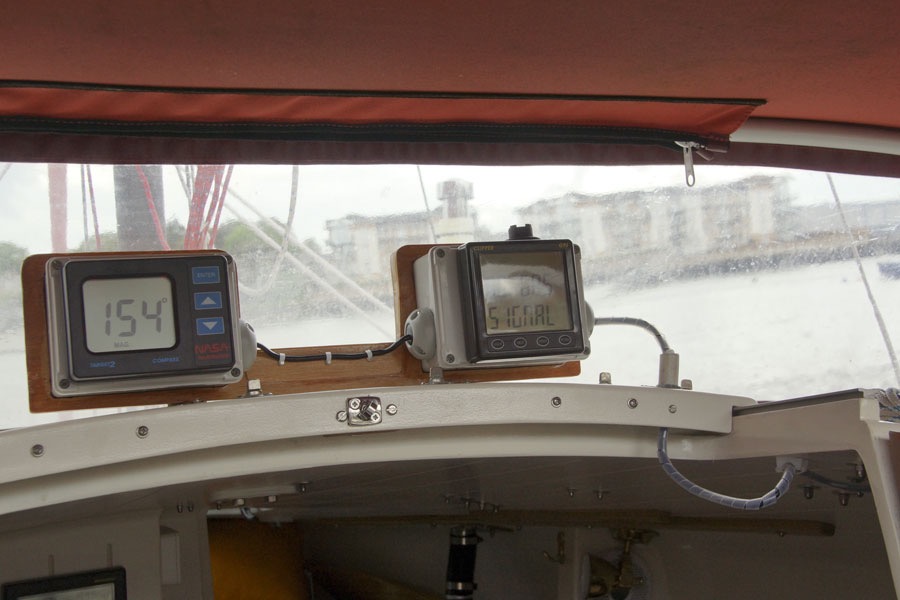
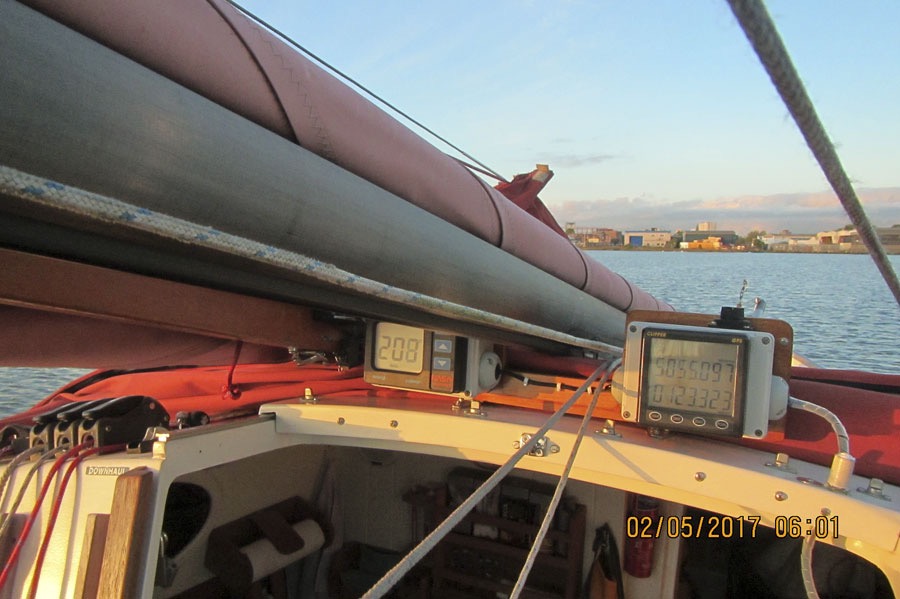
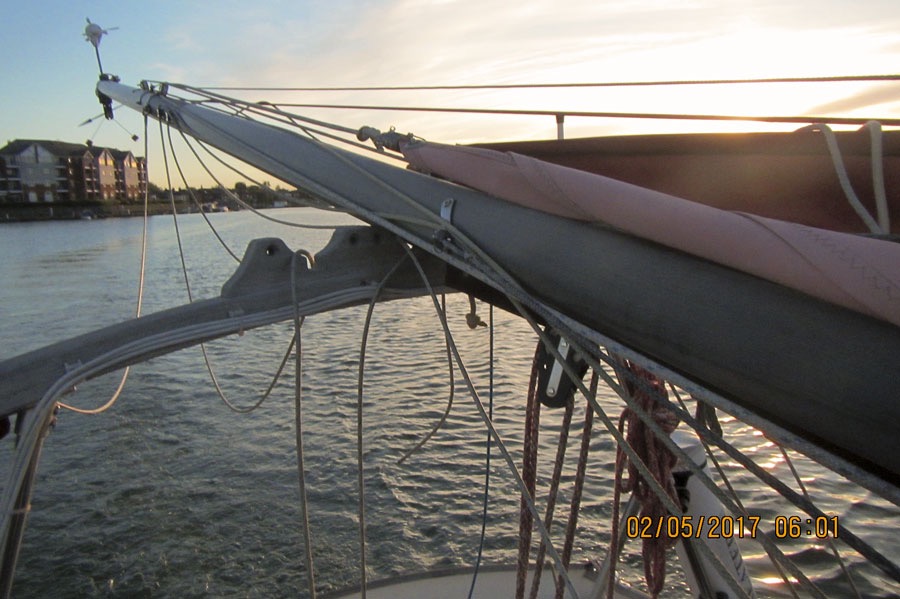
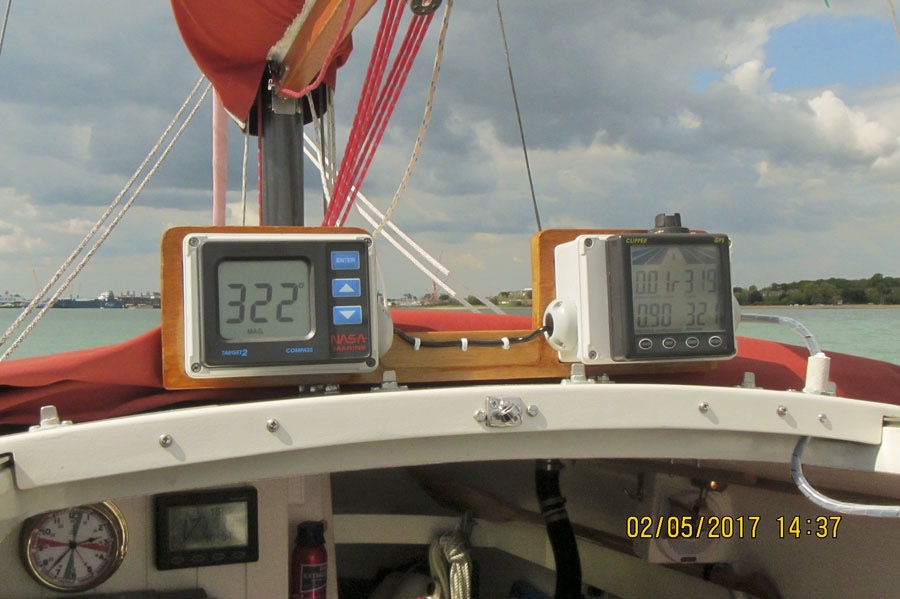
|





